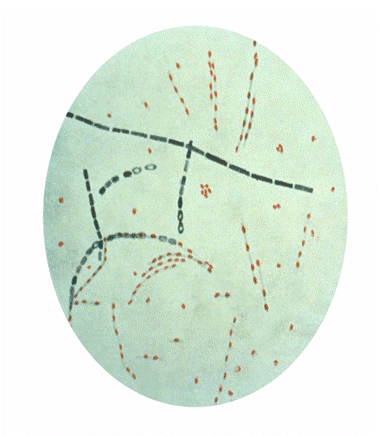
|
Home Sweet Home |

|
Because it is so hard and rare to be able to distinguish undoubtedly between the different strains of anthrax, it has been determined that they share a recent common phylogenetic ancestor. The two strains have been termed Anthrax A and Anthrax B. Anthrax B only occurs in approximately 11% of all cases, and can only be seen in southern Africa. Because both strains can be found in Africa, scientists have come to the conclusion that the origin of anthrax is Africa. |
|
Anthrax spores have the capability to remain dormant in soil and on certain plants for decades at a time. Soil is the most common place the spores can be found, and as a result of this they have been called one of the most stable of the bacterium spores. Some of the factors that welcome the presence of anthrax spores include nitrogen levels found in the soil, soil with a pH higher than 6.0, temperatures higher than fifteen degrees Celsius, and climate changes that are rapid and often surprising. |

|
Public Domain image of photomicrograph of anthrax spores. |
|
Click here to link back to multipleorganisms.net and search for different organisms. |
|
Interested in learning more about the fine institution I attend? Click here to link to the University of Wisconsin—La Crosse’s home page. |